It looks like you're using an Ad Blocker.
Please white-list or disable AboveTopSecret.com in your ad-blocking tool.
Thank you.
Some features of ATS will be disabled while you continue to use an ad-blocker.
share:
Many thanks for bringing this to the attention of ATS and myself. I'm no expert in Egyptology, though I do know of Sobek and how crocodiles were
revered as gods I never would have known about the labyrinth nor the nearby city of Crocodilopolis.
I would have thought that the worship of crocodiles would be related to their power and strength - how they were almost rulers of the Nile. I find it very interesting how the Egyptians believed in a very specific form of animism in relation to their gods taking the form of animals and also how they respected their environment, specifically the Nile as a part of their own existence.
I would have thought that the worship of crocodiles would be related to their power and strength - how they were almost rulers of the Nile. I find it very interesting how the Egyptians believed in a very specific form of animism in relation to their gods taking the form of animals and also how they respected their environment, specifically the Nile as a part of their own existence.
a reply to: Kantzveldt
I knew I forgot something when I was posting the Qodesh Stele.
The incident of Menes, the first human pharaoh, also known as Min (as seen in the Qodesh Stele)
Menes Wiki
I knew I forgot something when I was posting the Qodesh Stele.
The incident of Menes, the first human pharaoh, also known as Min (as seen in the Qodesh Stele)
Menes Wiki
Diodorus Siculus recorded a story of Menes,[24] related by the priests of the crocodile-god Sobek at Crocodilopolis,[25] in which the pharaoh Menes, attacked by his own dogs while out hunting,[26] fled across Lake Moeris on the back of a crocodile and, in thanks, founded the city of Crocodilopolis.[25][26][27]
Faber (1816), taking the word campsa to mean either crocodile or ark and preferring the latter, identifies Menes with Noah and the entire story as a deluge myth.[28]
Edwards (1974) states that "the legend, which is obviously filled with anachronisms, is patently devoid of historical value",[27] but Maspero (1910), while acknowledging the possibility that traditions relating to other kings may have become mixed up with this story, dismisses the suggestions of some commentators[23] that the story should be transferred to the Dynasty XII pharaoh Amenemhat III and sees no reason to doubt that Diodorus did not correctly record a tradition of Menes.[26]
Joseph (2004) interprets the story as an allegory for the victory of Menes and his allies in his war of unification, and in which Menes' enemies are symbolised insultingly as dogs.[25]
a reply to: zardust
It's interesting the suggested connections to the First Dynasty, and the word play of crocodile and Ark, as that is what the Pegasus square represented, a place of first emergence of life upon the land surrounded by the waters and also a place of potential refuge for all living things, being the basis for the Ark that survives the flood waters.
I think there was such greater tradition and association with Ante-Diluvian legends which is why the Neith-Sobek mythos of Sais so inspired Plato to create his own version.
a reply to: gort51
It's a natural enough fact that reptilians and amphibians represent that stage of evolution from life in the water to life on the land and thus came to symbolize a fundamental point of transition, also that physical creations were understood as formed from water and clay mud, the crocodiles place is on that river bank.
a reply to: DodgyDawg
They did certainly respect animals including crocodiles as all representing some aspect of Divine creation, Neter or nature, and thus of course crocodiles were kept in sacred enclosures and mummified after death.
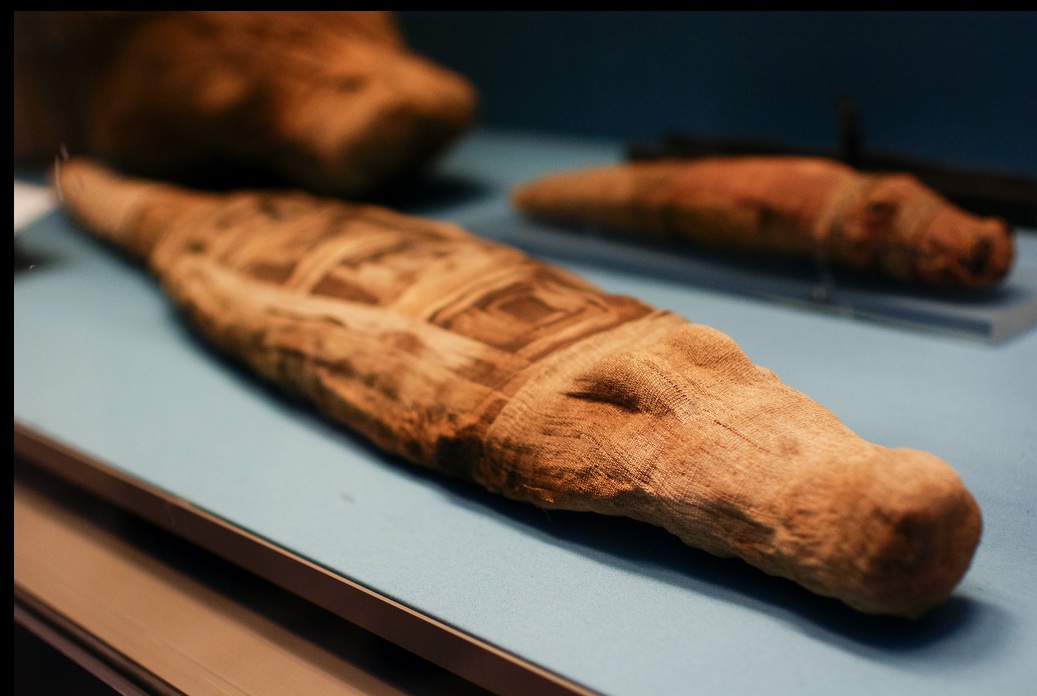
It's interesting the suggested connections to the First Dynasty, and the word play of crocodile and Ark, as that is what the Pegasus square represented, a place of first emergence of life upon the land surrounded by the waters and also a place of potential refuge for all living things, being the basis for the Ark that survives the flood waters.
I think there was such greater tradition and association with Ante-Diluvian legends which is why the Neith-Sobek mythos of Sais so inspired Plato to create his own version.
a reply to: gort51
It's a natural enough fact that reptilians and amphibians represent that stage of evolution from life in the water to life on the land and thus came to symbolize a fundamental point of transition, also that physical creations were understood as formed from water and clay mud, the crocodiles place is on that river bank.
a reply to: DodgyDawg
They did certainly respect animals including crocodiles as all representing some aspect of Divine creation, Neter or nature, and thus of course crocodiles were kept in sacred enclosures and mummified after death.

edit on Kpm430114vAmerica/ChicagoFriday2530 by Kantzveldt because: (no reason given)
originally posted by: Kantzveldt
Yes i noticed the recent exhibition, it would be good to see the work laid out in full, as it's seven metres in length, i suppose the length of a particularly large crocodile. I think the 19th scholars were right in that the work would have to in some way relate to the Labyrinth of Hawara, it does reference all cultic sites of Sobek in the Faiyum and the Hawara Temple/Labyrinth was the primary of such.
Well, it certainly relates in physical proximity, as the exhibition text states though, it is no longer believed to represent the Labyrinth as Petrie et al original thought. If anything, the Book is representative of the 'world' of Lake Moeris, of which, of course, the Temple of Sobek was an integral and central part.
originally posted by: Kantzveldt
The Underground chamber section of the Papyrus which i reconstructed in the OP will give indications of the role of Sobek in the Osiris mysteries, in it's own way a Book of the Dead specific to the cult of Sobek and Neith, that i would expect to have been an aspect of the Labyrinth cult, which is seen in conceptual terms here in the section before the Underground chamber, the rectangle, which will be relating to a field or measure.
I am not sure that I would make the assumption that it was in any way comparable to a Book of the Dead or would ascribe it to a 'Labyrinth cult'. The term labyrinth is ascribed more in the sense of the temple being labyrinth-like in it's complexity, particularly by Herodotus, who further tells us that the lower level contains tombs to the twelve kings and the sacred crocodiles. I think it likely, that the tombs of the kings are more symbolic and shrine-like though, given the context of the legends associated with them. The temple itself, like most of that period, was a place of meeting, commerce and storage, mostly administrative in purpose. Most Egyptian people worshipped privately in a domestic setting or shrine. The Book of Faiyum is much more of a map, in the sense of it describing a particular way of life and it's relationship to the world, so in a way, much more a book of the living, though definately incorporating metaphysical information as integral to their mode of being.
a reply to: KilgoreTrout
The sections of the scroll that are illustrating shrines of the Fayum are easy enough to recognise, here they are;
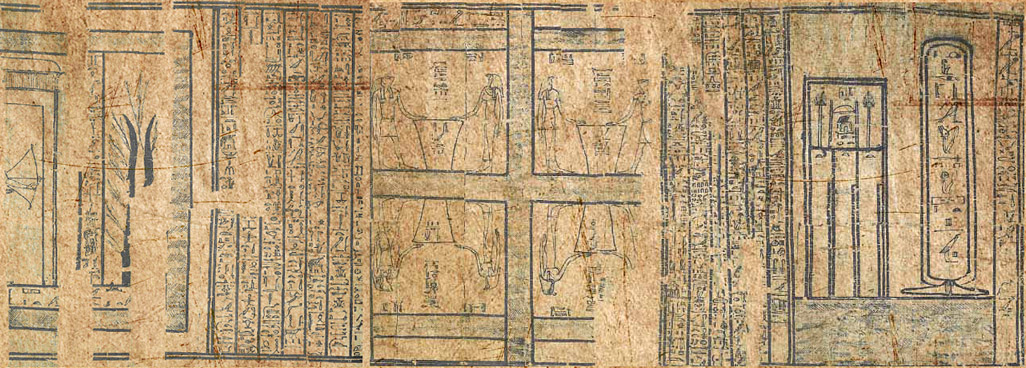
They are shown because the concern is with every aspect of the Cult of Sobek in the Fayum region, the cosmological concerns of the cult are seen in the sections in the OP, this the transformative aspect of Sobek-Ra through the Duat, the relationship to Osiris, in that sense very much like any Egyptian magical guide, whether the Pyramid texts, Coffin texts, Book of Coming Forth by Day, Book of Caverns, Book of Gates, they all share similar concerns.
The Labyrinth aspect is a result of internal complexity, but i think the best comparison is with the Sumerian Field constellation and the construction of the Abzu, the E-engura of Eridu or the E-Sagila of Babylon, the heart of the City around which the Akitu celebrations centred in the New Year rising of the Iku constellation, the Pegasus square, were Bet-Akitu meant 'House of Life'
Of course twelve would be used as a symbolic number, as it was with the Hebrew Tabernacle or Heavenly Temple that are also based on the Celestial Square, the importance of this really cannot be over estimated.
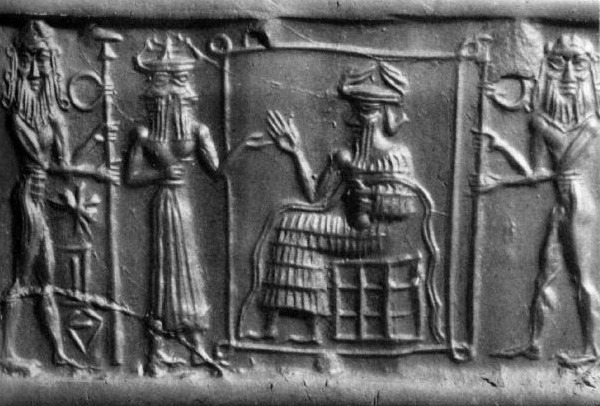
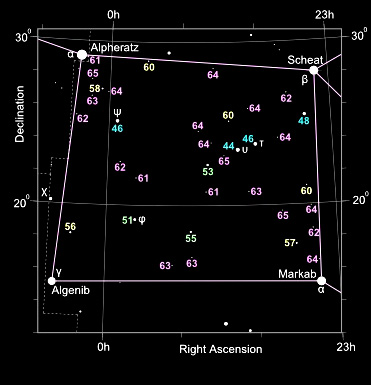
The sections of the scroll that are illustrating shrines of the Fayum are easy enough to recognise, here they are;

They are shown because the concern is with every aspect of the Cult of Sobek in the Fayum region, the cosmological concerns of the cult are seen in the sections in the OP, this the transformative aspect of Sobek-Ra through the Duat, the relationship to Osiris, in that sense very much like any Egyptian magical guide, whether the Pyramid texts, Coffin texts, Book of Coming Forth by Day, Book of Caverns, Book of Gates, they all share similar concerns.
Book of the Faiyum centered on Sobek with a considerable portion devoted to the journey made by Sobek-Ra each day with the movement of the sun through the sky. The text also focuses heavily on Sobek’s central role in creation as a manifestation of Ra, as he is said to have risen from the primal waters of Lake Moeris
The Labyrinth aspect is a result of internal complexity, but i think the best comparison is with the Sumerian Field constellation and the construction of the Abzu, the E-engura of Eridu or the E-Sagila of Babylon, the heart of the City around which the Akitu celebrations centred in the New Year rising of the Iku constellation, the Pegasus square, were Bet-Akitu meant 'House of Life'
The lord established a shrine, a holy shrine, whose interior is elaborately constructed. He established a shrine in the sea, a holy shrine, whose interior is elaborately constructed. The shrine, whose interior is a tangled thread, is beyond understanding. The shrine's emplacement is situated by the constellation the Field
Of course twelve would be used as a symbolic number, as it was with the Hebrew Tabernacle or Heavenly Temple that are also based on the Celestial Square, the importance of this really cannot be over estimated.


edit on Kam430115vAmerica/ChicagoSaturday2630 by Kantzveldt because: (no reason given)
edit on
Kam430115vAmerica/ChicagoSaturday2630 by Kantzveldt because: (no reason given)
edit on Kam430115vAmerica/ChicagoSaturday2630 by
Kantzveldt because: (no reason given)
originally posted by: Kantzveldt
They are shown because the concern is with every aspect of the Cult of Sobek in the Fayum region, the cosmological concerns of the cult are seen in the sections in the OP, this the transformative aspect of Sobek-Ra through the Duat, the relationship to Osiris, in that sense very much like any Egyptian magical guide, whether the Pyramid texts, Coffin texts, Book of Coming Forth by Day, Book of Caverns, Book of Gates, they all share similar concerns.
The key mystery of the Book of Faiyum is it's uniqueness compared to other texts, the format and narrative structure are without direct comparison. Unlike those that you list, there are no clearly identifiable spells or instructions on how to navigate a 'journey'. This is why it intrigues so much, and why it is fun to speculate upon it. Of all the texts, possibly I can see some similarity to the Book of Caverns, which too seems (to me) to combine elements of the physical with the metaphysical. In terms of the shrines, I feel that there is some possibility, given context, that they may be tips of the hat of recognition to the other nomes, particularly given the inability of the experts to relate them to any shrines found in the physical vicinity of Lake Moeris.
originally posted by: Kantzveldt
The Labyrinth aspect is a result of internal complexity, but i think the best comparison is with the Sumerian Field constellation and the construction of the Abzu, the E-engura of Eridu or the E-Sagila of Babylon, the heart of the City around which the Akitu celebrations centred in the New Year rising of the Iku constellation, the Pegasus square, were Bet-Akitu meant 'House of Life'
Of course twelve would be used as a symbolic number, as it was with the Hebrew Tabernacle or Heavenly Temple that are also based on the Celestial Square, the importance of this really cannot be over estimated.
I think that there is the possibility of numerous comparisons and explanations. Personally, and in no way negating your own theory, in terms of the comparison with Mesopotamian influence, the Book's mention of the Ogdoad would draw me towards a comparison with the Octaetris.
In astronomy, an octaeteris (plural: octaeterides) is the period of eight solar years after which the moon phase occurs on the same day of the year plus one or two days.
This period is also in a very good synchronicity with five Venusian visibility cycles (the Venusian synodic period) and thirteen Venusian revolutions around the sun (Venusian sidereal period). This means, that if Venus is visible beside the moon, after eight years the two will be again close together near the same date of the calendar.
en.wikipedia.org...
The Book therefore, in relationship with the 'Labyrinth' presents the coexistence of the Luni-Solar Calendar, that the Egyptians inherited from Sumerian astrology, to the adoption of the Solar calendar as depicted by the 12 palaces arranged into two sets of six, one batch running south, the other north. This of course coincided with the incredibly, for it's time and beyond, complex hydrological system that fed and drained the lake. This again is illustrated in the Book, by the outstretched arms of Mehet-weret representing those channels. That Mehet-weret is shown on the horizontal is yet another entirely unique feature of the Book, which some have taken to indicate that the Book was meant only for the priest-class. By placing her in this position too, given the text, seems to be a means by which to link Faiyum with the rest of Egypt.
"Deities and humans live in peace. It flows from Elephantine to reach (its proper) place to bring possessions from Elephantine. Which proceeds from the leg of the Child, to inundate the two districts of Osiris, who endures and is strong in body for ever.”
“This is Mehet-weret making her two arms; she gives cool water to the two lands which flows to the south and the north of the Fayum. "
My favourite bit of the text though, given my particular interests, apart from the hydrological system, are the almost taxinomical classifications, according to type of the flora and fauna of the lake. I get a strong sense of there being some attempt to create a record of this time and place that is obliquely scientific. Some of the reviews at the time of the exhibit put forth the idea that the Book was a precursor of product branding, and I can see what they mean to an extent, but I think that perception is too weighted in modern cynicism. I think much more that this was an incredible place, with a somewhat different way of life to the rest of Egypt and the priesthood of Sobek wanted to communicate that.
edit on 26-4-2014 by KilgoreTrout because: (no reason given)
a reply to: KilgoreTrout
There are several things eight fold symbolism can be based upon, i'd probably go with eight directionalism though that again also relates to eight year Venus cycles, but in that case there is always the 9th, the centre.
Mehet-Weret in her very particular aspects here probably supplies the basis for the complexity associated with this establishment, in some ways she seems to be flood management or channeling, in the sense of principles of irrigation but possibly much more, this again relating to that aspect of the cult of Neith of weaving and pattern.
There seems some crossover with the cult of Hathor as Celestial cow and her seven cow maidens but in ascribing this to Neith the emphasis may be on the spread and development of pattern were the force is as water, and brings with it life or the potential for such, the pattern i then related to the Pleiades could be the basis for this, the seven knots.
Message from the Pleiades
Mehet-Weret
My visual take on what's involved here is tending toward that capillary blue force, the 9th ray, seen in John Carter of Mars
The Ninth Ray
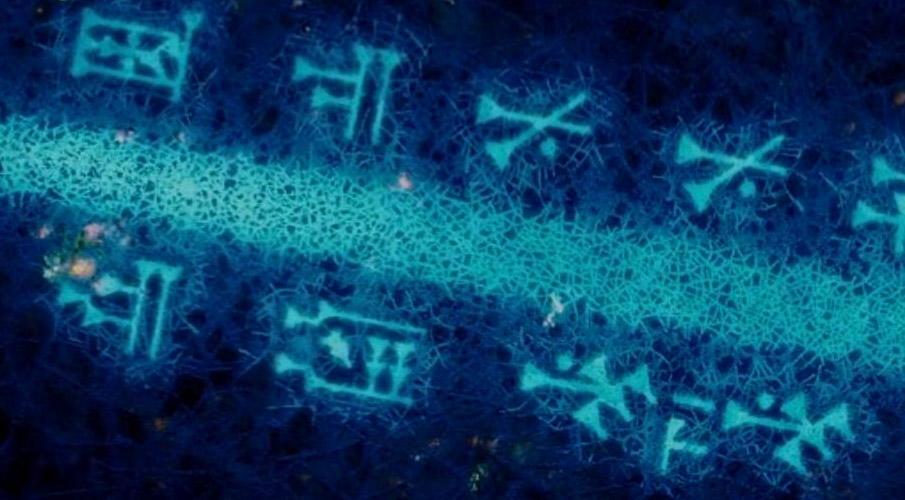
There are several things eight fold symbolism can be based upon, i'd probably go with eight directionalism though that again also relates to eight year Venus cycles, but in that case there is always the 9th, the centre.
Mehet-Weret in her very particular aspects here probably supplies the basis for the complexity associated with this establishment, in some ways she seems to be flood management or channeling, in the sense of principles of irrigation but possibly much more, this again relating to that aspect of the cult of Neith of weaving and pattern.
Mehet-Weret’s name literally means ‘Great Flood’ or ‘Great Swimmer’, and she embodies the celestial waters navigated by the heavenly bodies, for Egyptians saw the upper atmosphere and the heavens as a body of water with the horizons as its banks.
There seems some crossover with the cult of Hathor as Celestial cow and her seven cow maidens but in ascribing this to Neith the emphasis may be on the spread and development of pattern were the force is as water, and brings with it life or the potential for such, the pattern i then related to the Pleiades could be the basis for this, the seven knots.
Message from the Pleiades
Mehet-Weret is also mentioned in plural form, as the “Celestial Cattle” which are referred to in CT spell 407, for “knowing the seven knots of the Celestial Cattle,” These ‘knots’ (thesu) may be understood as a herd of celestial cattle descending from Mehet-Weret, and also as certain celestial potencies, in accord with the wide semantic range of words based on the root thes- in Egyptian, for instance ‘vertebra’, in light of a passage in spell 407 reading “O you seven knots of the Celestial Cattle … may you grant supports for my bones…”, and also ‘speeches’, the seven stages in the ordering of the cosmos brought about by the words of a demiurge, the range of possible interpretations of the term corresponding to an inherent flexibility in Egyptian cosmogony. Elsewhere these seven ‘speeches’ are characterized as divine beings devoted to the protection of Mehet-Weret
Mehet-Weret
My visual take on what's involved here is tending toward that capillary blue force, the 9th ray, seen in John Carter of Mars
The Ninth Ray

edit on Kam430116vAmerica/ChicagoSunday2730 by Kantzveldt because: (no reason given)
Ya'll are going all over the place. It's pretty simple. It's very real and it does exist. The maze was for the dragon named Cur and it was later
reproduced in Crete as the Labyrinth of the Minotaur. You do know the the story of the minotaur and the maze, right? Do you know why the Minotaur was
there? Probably not. It was there because it was it's home and it's where it chose to be. Without seeing that part of the fable stolen from the
Dragon Bloodline, "The Minotaur" (Dragon) could leave at any time since it knew the maze quite well and could leave anytime it wanted. So many people
make the story about the human. It's why they'll never see what's right in front of them and how the Dragon's Bloodline has been hidden in plain sight
and people are too ignorant to know it.
new topics
-
Democrats send letter to Biden urging him to ratify Equal Rights Amendment
US Political Madness: 2 hours ago
top topics
-
Reprehensible Behavior
US Political Madness: 14 hours ago, 10 flags -
This is adorable you guys!
General Chit Chat: 13 hours ago, 8 flags -
Defending the need for adherence to Old Testament commandments under the new covenant of Christ
Conspiracies in Religions: 15 hours ago, 5 flags -
Democrats send letter to Biden urging him to ratify Equal Rights Amendment
US Political Madness: 2 hours ago, 1 flags
active topics
-
Light from Space Might Be Travelling Instantaneously
Space Exploration • 28 • : Lazy88 -
More Bad News for Labour and Rachel Reeves Stole Christmas from Working Families
Regional Politics • 9 • : covent -
Democrats send letter to Biden urging him to ratify Equal Rights Amendment
US Political Madness • 2 • : VariedcodeSole -
Post A Funny (T&C Friendly) Pic Part IV: The LOL awakens!
General Chit Chat • 7914 • : Cymru -
George Stephanopoulos and ABC agree to pay $15 million to settle Trump defamation suit
Mainstream News • 25 • : Echo007 -
Defending the need for adherence to Old Testament commandments under the new covenant of Christ
Conspiracies in Religions • 24 • : FullHeathen -
-@TH3WH17ERABB17- -Q- ---TIME TO SHOW THE WORLD--- -Part- --44--
Dissecting Disinformation • 3713 • : 777Vader -
Rant. I am sick of people saying the police are revenue raising.
Rant • 12 • : inflaymes69 -
Reprehensible Behavior
US Political Madness • 10 • : nugget1 -
Drones everywhere in New Jersey ---and Elsewhere Master Thread
Aliens and UFOs • 174 • : nugget1
